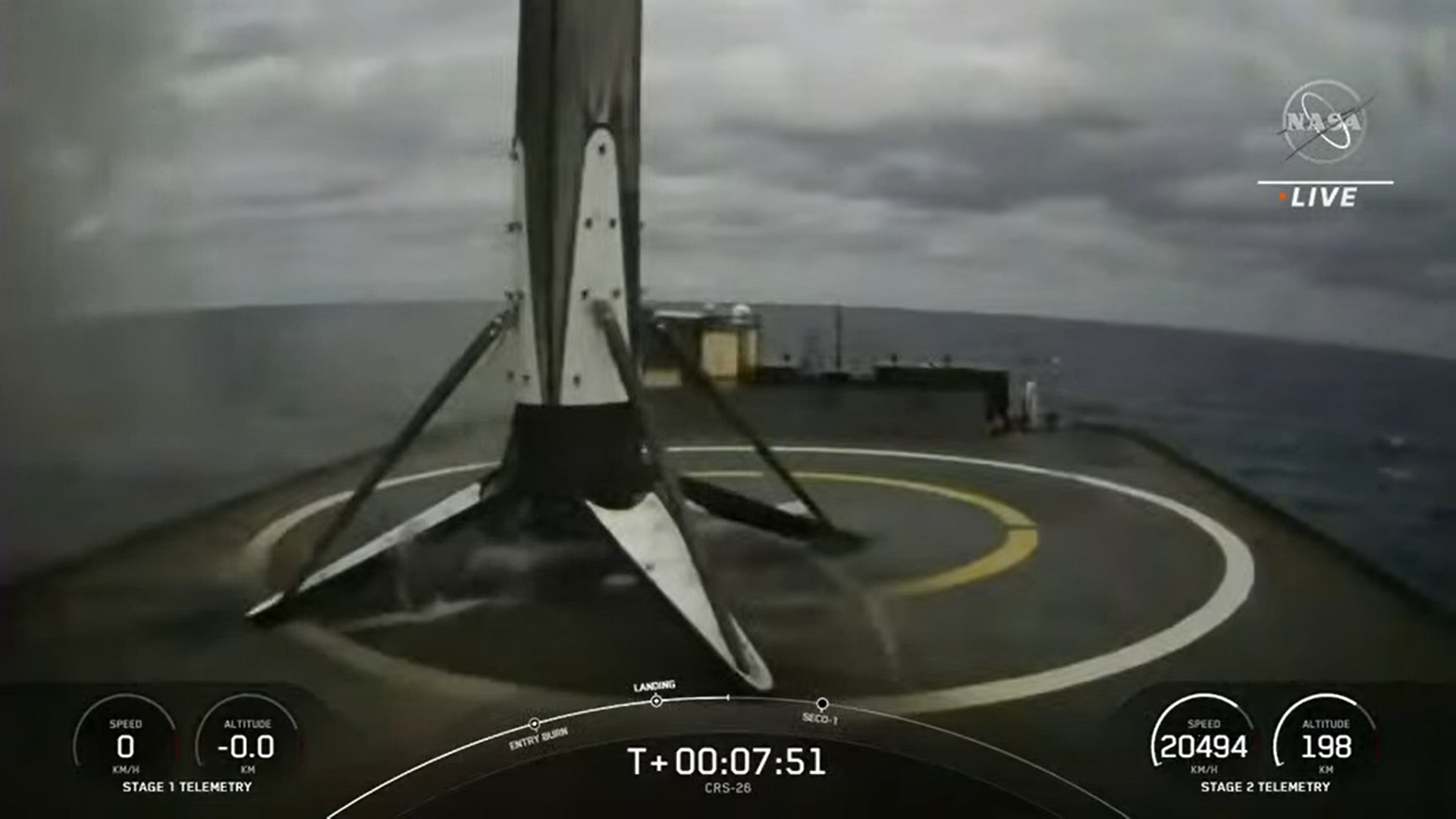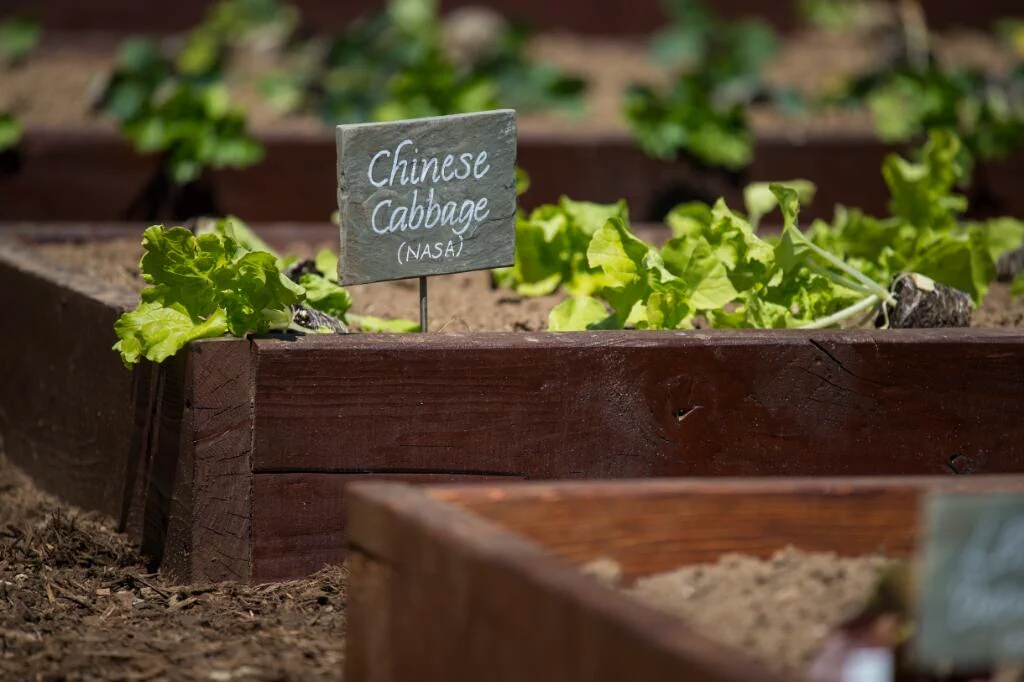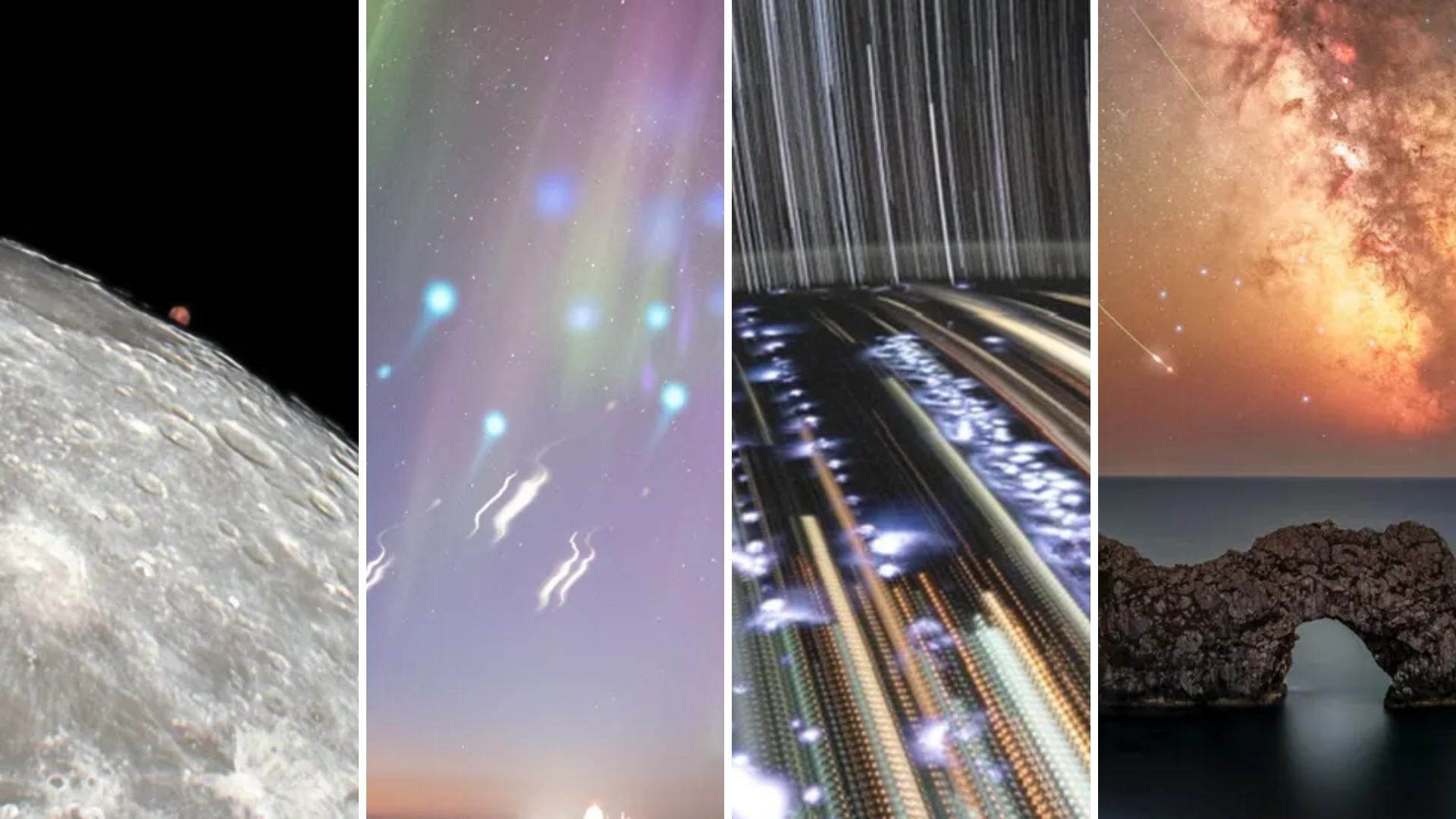SpaceX Dragon launches science, solar arrays to International Space Station
They nailed the booster landing, as well.
SpaceX successfully launched a spaceship filled with science to the space station Saturday following a weather scrub.
A Dragon cargo spacecraft carrying SpaceX's 26th commercial resupply mission launched for the International Space Station (ISS) Saturday (Nov. 26) at 2:20 p.m. EST (1920 GMT). The launch, which was SpaceX's 54th overall launch and fifth Dragon launch of 2022, came after an attempt on Nov. 22 was scrubbed by bad weather.
"Beautiful launch, as always, great to see that," NASA spokesperson Sandra Jones said during the launch's live broadcast.
Docking at the ISS is scheduled to occur on Sunday (Nov. 27) at 7:30 a.m. EST (1230 GMT) with coverage available here at Space.com, courtesy of NASA, starting at 6 a.m. EST (1100 GMT). When Dragon arrives at the orbiting laboratory, it will dock to the zenith, or space-facing, port of the space station, where it will remain for about 45 days.
"Go Falcon and happy Thanksgiving, ISS," launch personnel said at lift-off.
Related: See the evolution of SpaceX rockets in pictures
Today's launch was the first flight for both the Falcon 9 and Dragon, an unusual occurrence for SpaceX. As planned, about eight minutes after launch, the Falcon 9's first stage touched down on the drone ship "Just Read the Instructions" stationed in the Atlantic Ocean.
Breaking space news, the latest updates on rocket launches, skywatching events and more!
Dragon carried 7,700 pounds (3,500 kilograms) of cargo during today's launch. Some of the payloads on board include dwarf tomatoes, a microscope to look at changes in crew immune systems, liquid resin tech to create bigger structures, solar power arrays, hardware to capture images of astronaut eyes and a system to create nutrients from easy-to-carry space foods like yogurt, NASA officials wrote in a release.
With NASA having just launched its Artemis 1 uncrewed mission to the moon Nov. 16, preparing for long-duration excursions under the Artemis program will require rethinking how to supply astronauts with food and keep them healthy for weeks or months, not only on a space station, but also on the moon.
Veggie is a series of experiments that has been exploring growing all kinds of plants in space, and even flowers like zinnias. Today's Dragon carried the latest installment, dubbed Veg-05, which is bringing Red Robin dwarf cherry tomatoes to the ISS. The investigators are particularly drawing lessons learned from successfully maturing chili peppers last fall, Gioia Massa, NASA's space crop production scientist and principal investigator of Veg-05, told Space.com during a news conference Nov. 9.
"To date, that's the longest plant growth experiment we've had on the space station," Massa said of the chili peppers. "It was 135 days, and the astronaut pollinated the fruit. We got a tremendous amount of data. We learned better ways to fertilize as part of that."
Related: Astronauts are growing chili peppers in space in spicy first
Veg-05 investigators are seeking ways of reducing astronaut time on the plants, as past experiments have required manual watering and monitoring. "Pillow" reservoirs will be used for the dwarf tomatoes, much like with past crops of lettuce and zinnias. (The "pillows" refer to bags that contain fertilizer and a soilless substance, packed into a wicking surface, that encourages growth with a minimum of mess.)
"Tomatoes will be a new adventure for us on the Veggie team, trying to figure out how to keep these thirsty plants well-watered without over watering," Massa said. Astronauts will eat the tomatoes in orbit to see how they taste, and investigators are already discussing how to better the physics of watering for low-gravity environments on the moon or Mars, she added.
Related: For astronauts on Mars, the veggie of the day may be asparagus
In addition to the host of science equipment, Dragon is carrying more solar arrays up to the space station to continue upgrading power on the orbiting complex. The ISS base arrays were installed during the station's first major phase of construction in the early 2000s. Over time, arrays in space naturally degrade, producing less power, and all of the arrays on the ISS are working beyond their 15-year design life.
The two new solar arrays, called iROSAs (ISS Roll-Out Solar Arrays), are designed to be deployed atop the original arrays to partially overlay the larger, original structures. There are six iROSA installations planned; astronauts have already installed two and mounted hardware for three more during a spacewalk on Tuesday (Nov. 15).
The new arrays can generate 20 kilowatts of power and when working with the still-exposed parts of the older arrays they cover, the space station's electricity supply should be boosted by 20% to 30%. The two new iROSAs are scheduled to be installed during spacewalks beginning on Dec. 3, NASA has said.
Video: Wow! NASA photographer spots space station crossing the sun during spacewalk
The 2021 spacewalks that installed the first two iROSAs had only minor issues, including bracket interference when unhinging the arrays and small bucklings in the sunshades used to prevent overheating. The two arrays aboard the current mission have a redesigned hinge and stronger sunshades to prevent the problem from happening again, Matt Mickle, Boeing's developmental projects senior manager, told Space.com during the same news conference.
"We've tested those minor modifications on the ground, and ... we are confident that will ensure a better deployment this time," he said. The two currently installed iROSAs, he added, have had slightly better power generated than expected.
NASA, which is committed to the ISS until at least 2030 and hopes other partners will sign on beyond 2024, is working on upgrading those arrays to not only provide solar power for existing experiments and station needs, but also to extend those capabilities for the growing commercial partners on the complex.
Elizabeth Howell is the co-author of "Why Am I Taller?" (ECW Press, 2022; with Canadian astronaut Dave Williams), a book about space medicine. Follow her on Twitter @howellspace. Follow us on Twitter @Spacedotcom or Facebook.

Elizabeth Howell (she/her), Ph.D., was a staff writer in the spaceflight channel between 2022 and 2024 specializing in Canadian space news. She was contributing writer for Space.com for 10 years from 2012 to 2024. Elizabeth's reporting includes multiple exclusives with the White House, leading world coverage about a lost-and-found space tomato on the International Space Station, witnessing five human spaceflight launches on two continents, flying parabolic, working inside a spacesuit, and participating in a simulated Mars mission. Her latest book, "Why Am I Taller?" (ECW Press, 2022) is co-written with astronaut Dave Williams.





